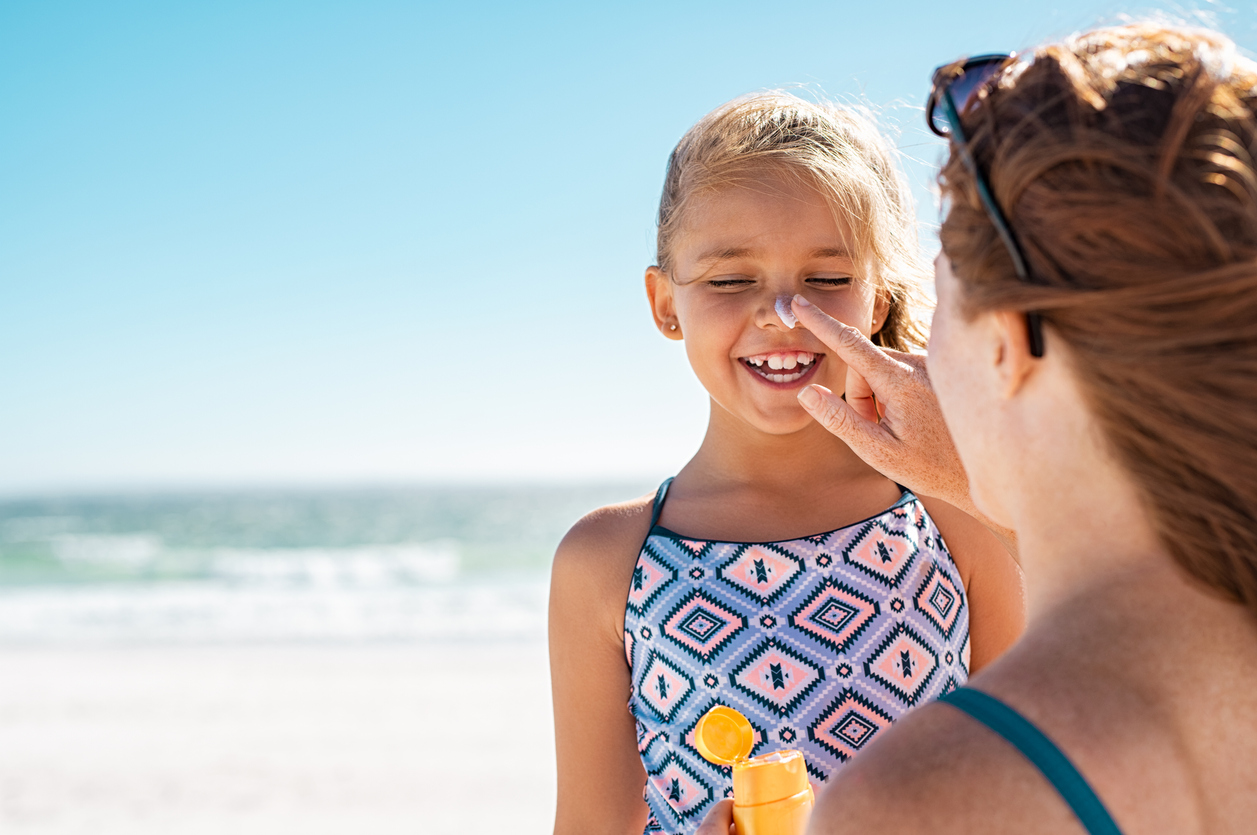
It’s officially summer, and that means people are spending more time outside in the sun. It’s critical to protect yourself and your family from the sun’s harmful short-wave ultraviolet B (UVB) and long-wave ultraviolet A (UVA) rays.
According to Stanford Children’s Health, kids are more likely to develop skin cancer in later years if they have fair skin, moles or freckles, multiple blistering sunburns, or a family history of skin cancer. Exposure to the sun during daily activities and play causes the most sun damage. Overexposure to sunlight before age 18 is most damaging to the skin.
“To meet adequate guidelines of the Skin Cancer Foundation seal of recommendation you should be using a product of at least 30 SPF/UPF to protect you and your family’s skin during extended exposure,” said Beth Layhe, DO, oncologist, Karmanos Cancer Institute at McLaren Greater Lansing. “It’s also good to remember sunblock can wear off after extended use and frequent trips in the water no matter what the SPF is, so always reapply throughout the day.”
Once you get over SPF 50, it’s only marginally better protection at a higher cost. When shopping for a sunblock it’s important to know how sun protection factor (SPF) works. If the SPF is 30, it means that 1/30 of the sunlight is getting through to the skin. It’s a ratio of sunlight exposure.
Sun protective fabrics use ultraviolet protection factor (UVP) and are becoming more common as a solution for protecting your children’s skin against the sun. These fabrics can be made into clothing items like hats, shirts, and swimsuits.
Like SPF, a UPF of 30 means that 1/30 of the sunlight is getting through the fabric to the skin. The only difference is that UPF measures both UVB and UVA, while SPF only measures UVB.
“The best way to protect your child’s skin is to use both a sunblock and sun protective clothing,” said Dr. Layhe “This way you can make sure the areas of the body that get a lot of sun exposure are protected by sun protective clothing, but you are still protecting other areas of the body like the tops of feet, legs, and hands with sun-block.”
A proper sun skin care routine can protect your child from the sun’s harmful rays while still